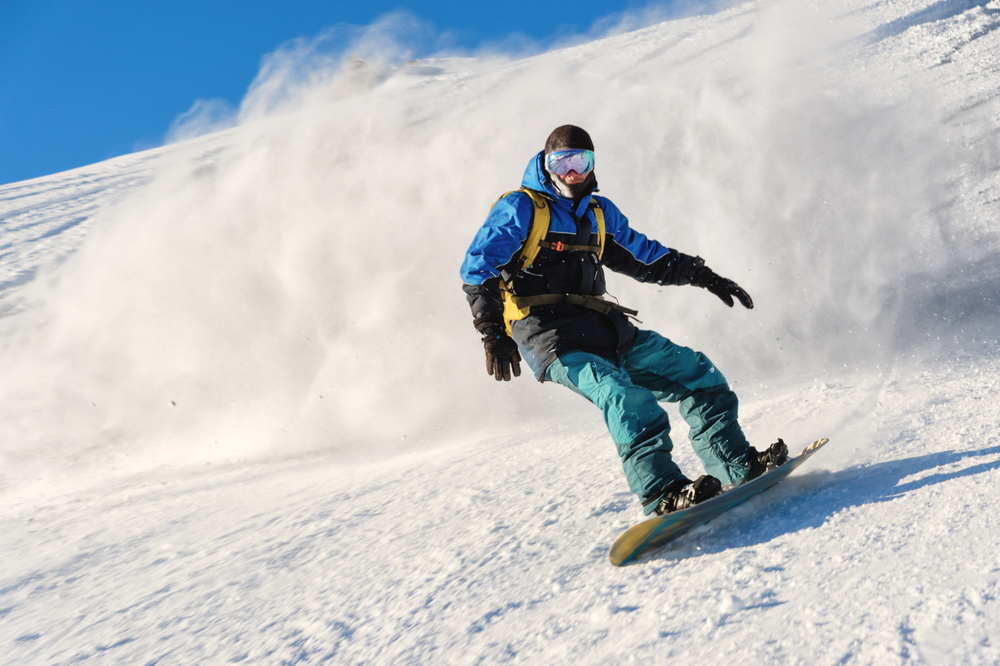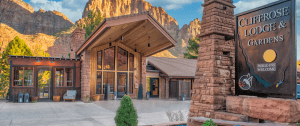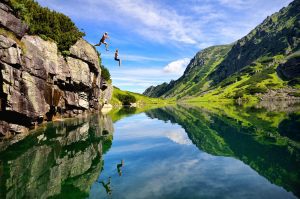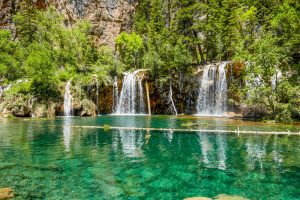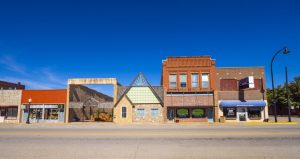Snowboarding is one of the most popular winter sports, with millions of people around the world hitting the slopes for an exhilarating run.
Not only is snowboarding fun and adventurous, but it’s also a great form of exercise that can burn anywhere from 300 to 600 calories an hour.
When you factor in the time on the chairlift and the wait in line, the calorie burn is even greater.
Keep reading to learn more about snowboarding and why it’s a great workout.
Table of Contents
How do you burn calories snowboarding?
A typical snowboarding session burns 300 to 600 calories as all your core muscles are engaged to ensure speed and stability.
Your quads and hamstrings power the initial movements at the top of the hill, while you need to use your calves for turning and guiding the board down the hill.
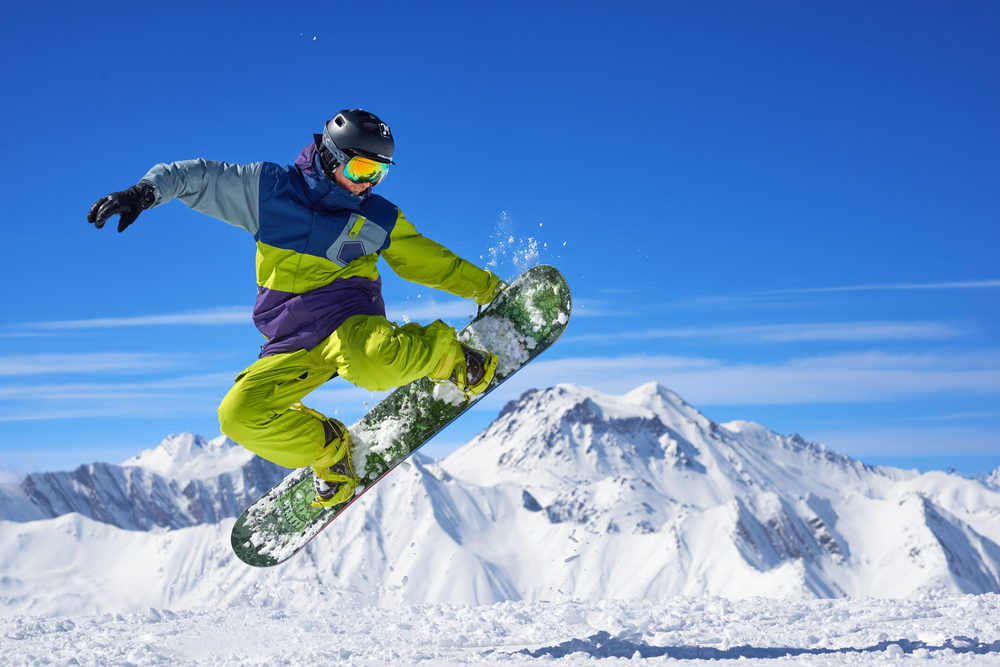
Your total calorie burn during an hour of downhill snowboarding depends on several things, including your weight, speed, slope, and snow quality.
One thing is for sure: the more time you spend snowboarding on beautiful mountains and valleys, the more calories you will burn and the more tired your muscles will be.
For a snowboarder on a medium run, a minimum of 100 calories should be burned every 15 minutes.
That means two hours of snowboarding can easily burn 800 calories or more.
Is snowboarding a good workout?
Modern snowboarding has become one of the most popular winter activities and workouts over the last few decades, as it’s a fun alternative to skiing and a different challenge as you head down the hill on your side rather than facing forward.
Snowboarding was created in 1965 by a Michigan engineer named Sherman Poppen, who made a toy for his kids by attaching two skis together with a rope at one end.
Discovering the fun of downhill glides with this new take on the traditional ski, Poppen put snowboarding on the map.
It quickly became known as another great snow workout, burning hundreds of calories at a time and suiting participants of all levels, from beginner boarders to experienced competitors.
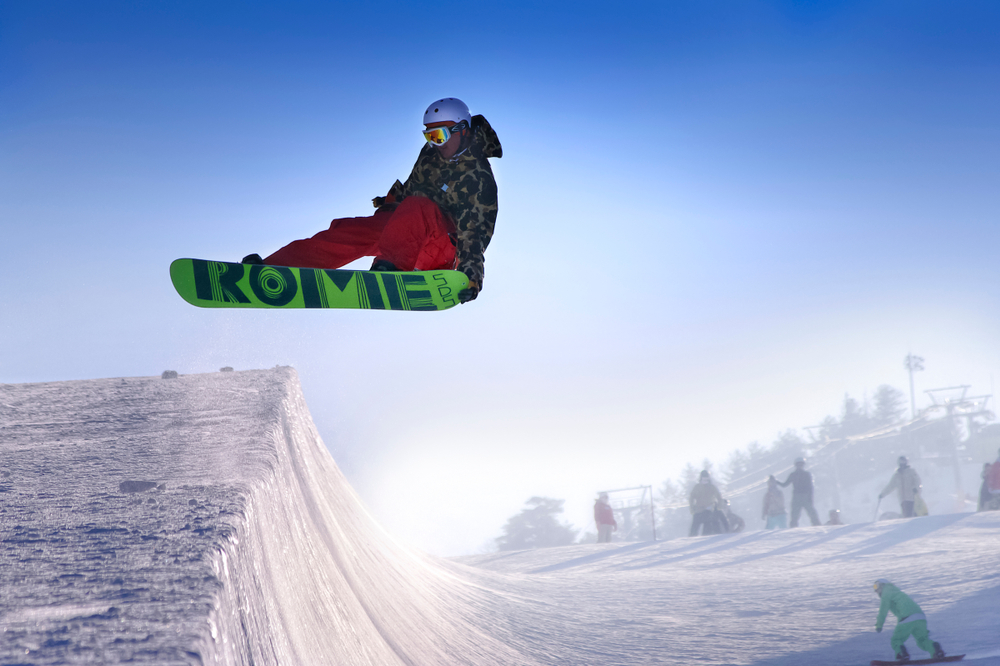
By 1998, snowboarding was an Olympic sport and an in-demand winter activity at snow destinations in the U.S. and worldwide.
With a good board, bindings, and boots, kids, teens, and adults can all embrace this exciting form of physical activity in the great outdoors.
Does snowboarding burn more calories than skiing?
Snowboarding draws many comparisons to skiing and most winter resorts in Colorado and similar destinations offer a mix of the two sports.
While both are excellent workouts, skiing burns slightly more calories than snowboarding on average.
According to Snowsports Industries America, alpine skiing burns around 500 calories each hour while snowboarding comes in at 450 calories.
Here are a few other common winter sports and their average hourly calorie burn:
- Speed skating – 1,000 calories
- Ice hockey – 680 calories
- Ice skating – 600 calories
- Sledding – 375 calories
- Snowshoeing – 450 calories
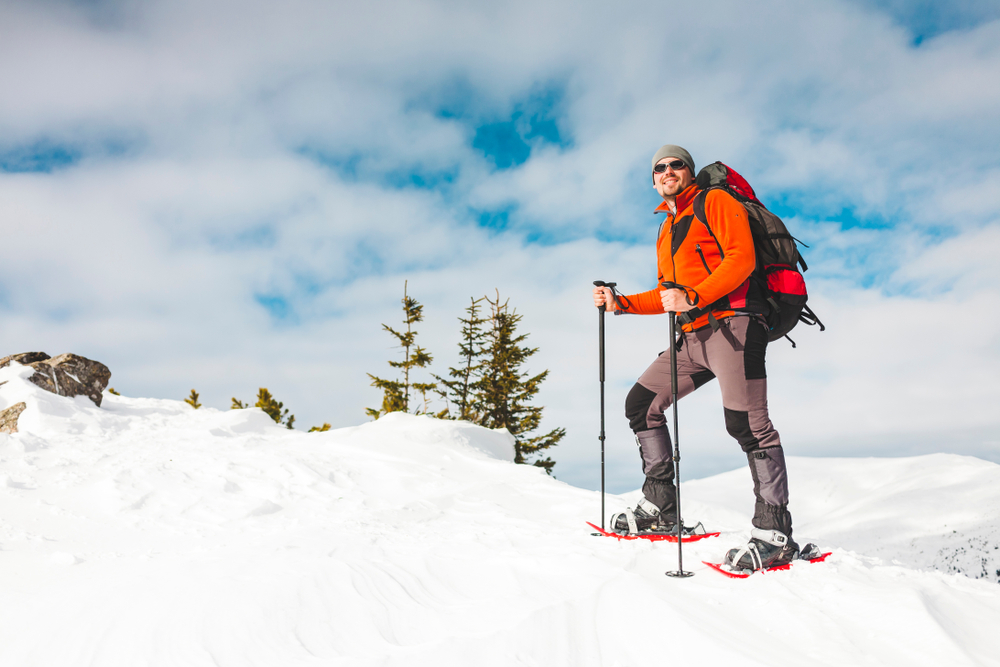
How to increase calorie burn while snowboarding
The more you snowboard and the harder the runs, the more calories you burn. It takes time to work up to bigger and steeper slopes, but as you become more comfortable on your board, you will be able to take snowboarding sessions to the next level, both physically and mentally.
Most beginner snowboarders put in a light effort on their first few runs, and even that burns 250 to 300 calories each hour.
As you become more confident, you can move to a more moderate effort, burning 300 to 400 calories per hour of snowboarding.
Once you are a seasoned snowboarding veteran, you should be able to put in a vigorous effort that burns around 500 to 600 calories an hour, if not more.
This is the level where most professional snowboard competitors are at.
Is snowboarding safe?
Hitting the mountains for a big snowboarding session is typically a safe workout as long as you’re aware of your surroundings and use a helmet.
Just like with skiing, it’s important to stay in control and look out for others on the hill and possible obstructions such as rocks, trees, or cliffs.
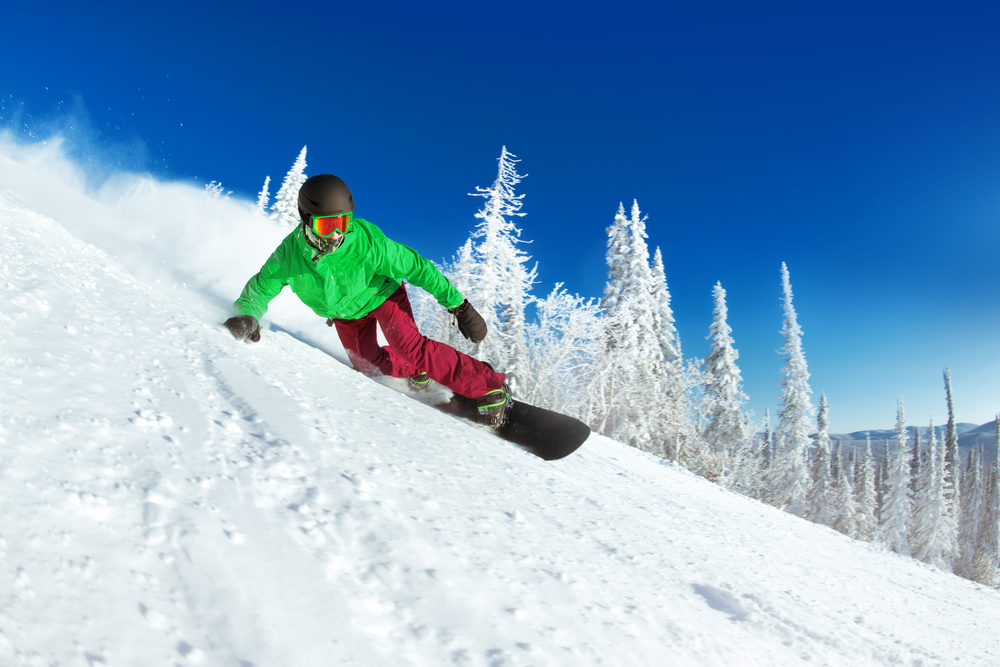
Considering the high-calorie burn throughout downhill runs, uphill climbs, and waiting/sitting time, snowboarding puts your muscles to good work.
That’s why it’s important to stretch and wear protective gear to prevent injury as much as possible.
It’s normal to feel some muscle burn, but if you become noticeably uncomfortable or feel abnormal pressure on your legs, it’s best to take a break.
Also, it’s worth mentioning that well-known skiing and snowboarding destinations are recognized for their safety standards, from maintained hills to on-site staff in case of an emergency.
If you pick a snowboarding hill that has a good safety record, you’ll be able to enjoy your snow workout and adrenaline-pumping session with greater peace of mind.
What are the health benefits of snowboarding?
With the right safety precautions in place, snowboarding is a healthy and exciting workout and a good way to get your body moving in the great outdoors.
Much like skiing, snowboarding is a high-calorie-burning cardiovascular activity that supports a strong, healthy heart.
Also, snowboarding and skiing are both weight-bearing activities, meaning they strengthen bones and tone muscles at the same time.

Aerobic or cardiovascular exercises are recommended for reducing the risk of serious health conditions and lowering blood pressure.
If you want to prevent heart disease, diabetes, stroke, and cancer as you get older, regular aerobic activities make a big difference.
You can manage a healthy weight and stay active through snowboarding, skiing, and similar winter fun activities.
How to warm up for snowboarding
Before you fly down the hill and start burning hundreds of calories an hour, you should take some time to warm up and prepare your body for the physical demands of snowboarding and skiing.
Here are a few suggestions for properly warming up before snowboarding to maximize your power and physical results:
- Quadriceps stretch
- Hamstring stretch
- Hip flexor stretch
- Shoulder stretch
- Overhead shoulder stretch
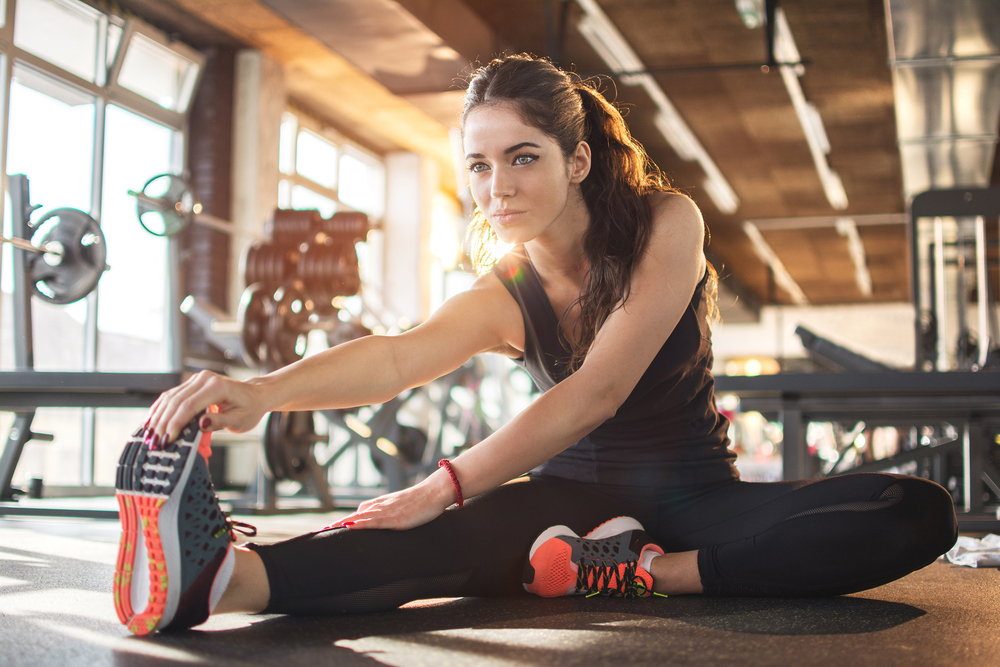
Dynamic stretching before and after a snowboarding session can help your muscles and support your body throughout the demands of rigorous runs up and down the hill.
Don’t forget that stretching burns calories too!
Safety tips for snowboard sessions
Finally, whether you’ve been snowboarding for years or you’re looking to take up a new winter sport, it’s important to stay safe while making your runs.
An hour of snowboarding can easily burn 300, 400, 500, or even 600 calories, but you need to protect yourself to prevent injury and ensure a safe and fun experience.
Here are some top safety tips for a successful snowboarding session:
- If you’re new to snowboarding, take private or group lessons to ensure you know how to fall safely and protect yourself.
- Invest in good-quality gear, including a skiing helmet, goggles, gloves, bindings, and shin/wrist guards.
- Check snow conditions and pay attention to your surroundings. Know the rules of the ski/snowboard facility, too.
- Stay on designated courses and avoid icy patches.
- Start with easy runs and pace yourself. Only choose hills you feel comfortable going down.
- Drink lots of water and stay fueled with healthy food.
- Brush up on first aid to understand what to do in case of injury, frostbite, or hypothermia.
- Snowboard with a friend and take breaks throughout the day.

